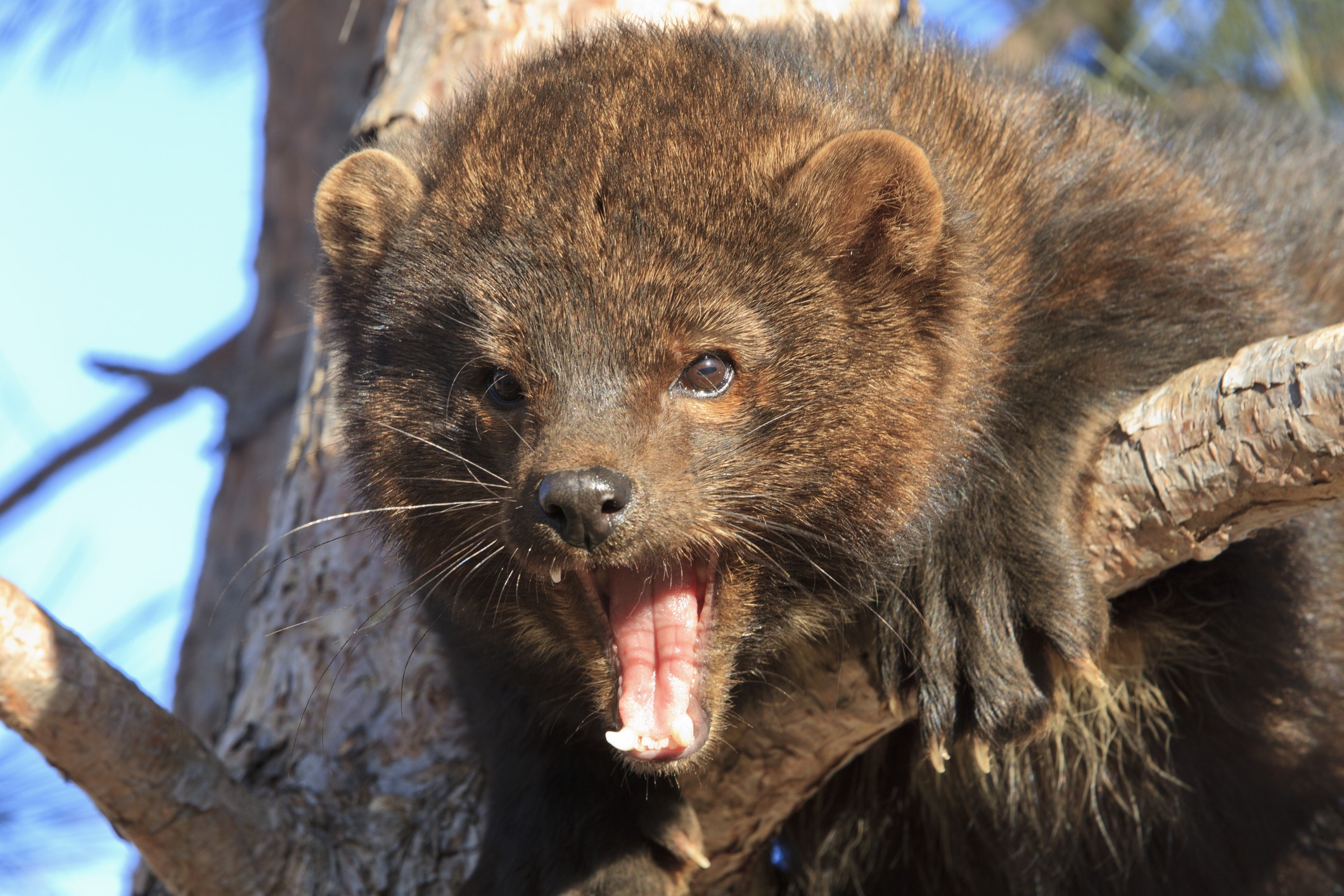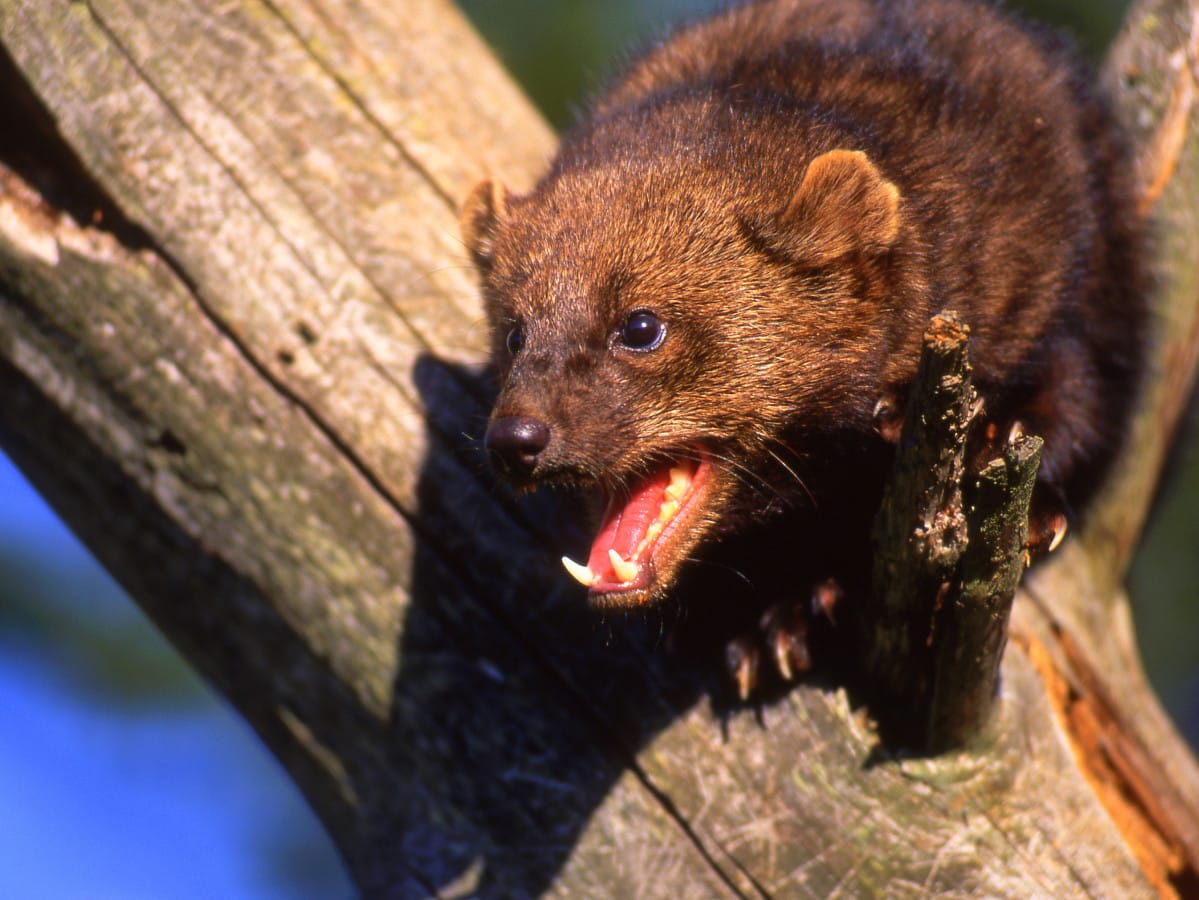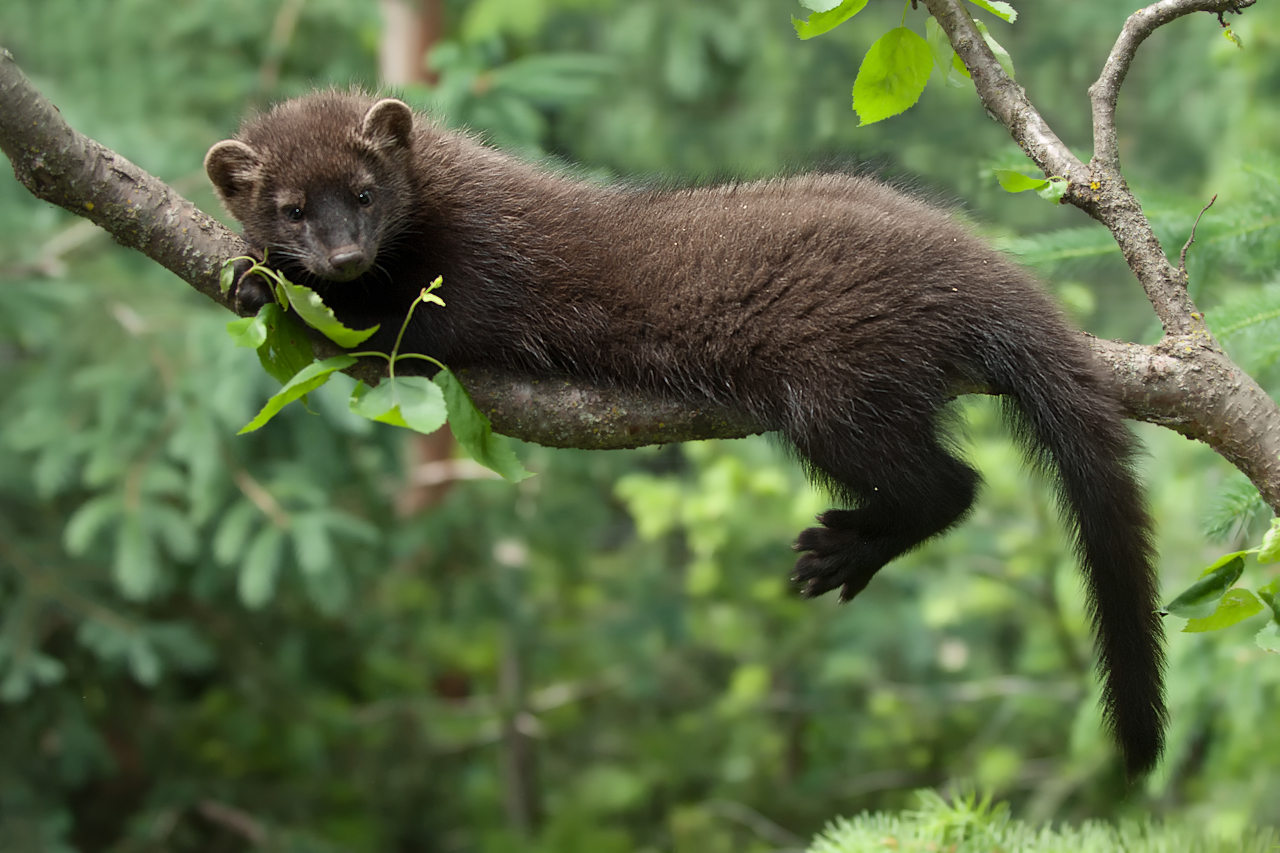Fisher Cat - Unmasking This Forest Resident
Many folks, you know, hear the name "fisher cat" and picture some kind of wild feline, maybe one that likes to catch fish. But, as a matter of fact, this creature is quite different from what its common name suggests, and it's certainly not a house cat's cousin, not even a distant one. This interesting animal, often misunderstood, is making its way into places where people live, which, honestly, can cause a bit of worry for those with small, furry friends at home.
These animals, in fact, are a type of weasel, a member of a family of animals known for being quite clever and, well, sometimes a little bit sneaky. They are native to the northern parts of our continent, generally preferring to stay hidden in deep forests. Yet, with their natural homes changing, these shy forest dwellers are showing up more often in areas closer to us, which, in a way, raises questions about how we can all live together.
We're going to explore what makes the fisher cat unique, where it typically hangs out, and what it really means when you hear about one being spotted nearby. We'll also talk about what they look like, what they eat, and why, you know, they sometimes get a bad rap.
Table of Contents
- What Exactly is a Fisher Cat?
- A Misunderstood Forest Creature - The Fisher Cat
- Where Do Fisher Cats Live and Why Are They Seen More Often?
- Fisher Cat Habitat Shifts
- What Do Fisher Cats Look Like?
- Physical Traits of the Fisher Cat
- Are Fisher Cats a Threat to Pets?
- Fisher Cat Interactions with Domestic Animals
What Exactly is a Fisher Cat?
The creature commonly called a "fisher cat" is, actually, not a cat at all. It's a member of the weasel family, a group of animals that includes otters, badgers, and even wolverines. Its proper name is just "fisher," or sometimes "pekan," which is a word from a Native American language. So, you know, the "cat" part of its name is quite misleading, as is the idea that it eats fish, because it doesn't particularly enjoy fish as a main part of its diet.
This animal, Pekania pennanti by its scientific designation, is a small meat-eating mammal that makes its home in North America. It's often thought of as a very shy animal, one that prefers to keep its distance from people. For a long time, people thought it was a type of marten, but scientists, you know, changed its classification in 2008. It's a solitary creature for most of the year, preferring its own company, except for a short period in late winter when it looks for a mate. They are active both during the day and at night, pretty much all year round.
The fisher has a history of being called by different names. Early European settlers, for instance, sometimes called it a "wejack." Other names include "otchock" from the Cree people and "otshilik" from the Ojibwan. These different names, you see, tell a story about how various groups of people have known and described this animal over time, reflecting its presence in different parts of the continent and its unique place in the local wildlife.
A Misunderstood Forest Creature - The Fisher Cat
This animal, the fisher cat, is one of the most reclusive and, therefore, often misunderstood creatures living in the forests of North America. People sometimes call it a "fisher cat," but this large weasel is, in fact, neither a cat nor does it primarily hunt for fish. It's a carnivore, meaning it eats other animals, and it is known for being a very skilled hunter in the dense, northern woods. You know, it's quite good at what it does.
Its secretive ways mean that many people never get to see one in the wild, which, you know, adds to the mystery surrounding it. When folks do catch a glimpse, they might be surprised by its appearance, which is quite distinct from a house cat. The name "fisher" itself, it's thought, might come from an old Dutch word for "fitch," which refers to a polecat, a different type of weasel. So, really, the name "fisher cat" is a bit of a mixed-up label for this interesting forest resident.
It's interesting how, in some places, the name of this creature has even been adopted by local sports teams. For example, the New Hampshire Fisher Cats, a baseball team, actually announced their home game times for the upcoming 2025 season on Thursday, October 31, with games scheduled at Delta Dental. This just goes to show, in a way, how the animal's name has found its way into popular culture, giving it a bit of local recognition even if many people don't truly know the animal itself.
Where Do Fisher Cats Live and Why Are They Seen More Often?
Fishers, as we've talked about, are a type of weasel that makes its home in the forests of the northern United States and Canada. They are usually quite happy staying out of sight, deep within the woods. However, you know, their homes are changing. Their habitat is, in a way, being "gobbled up" by human activities, like cutting down trees for wood or clearing land for farms. This means these animals are finding fewer places to live where they can be truly alone.
Because their natural living spaces are shrinking, these animals are, in fact, coming into areas where more people live. We've heard stories, for instance, of them being seen near golf courses or in places like Eastern Massachusetts, even near the Cape. It's pretty unusual to see one in the daytime, and if you do, that, honestly, might not be a good sign, as it could mean the animal isn't feeling well or is perhaps a bit disoriented. If you happen to spot one during the day, it's generally a good idea to let your local game warden know.
In the nineteenth century, these animals became quite rare. This was because of things like widespread logging, clearing land for growing crops, and too much hunting for their fur. Their numbers really went down. Today, populations are still thin in some areas because of trapping and the loss of forest land. In fact, the fisher is considered an endangered animal in the Southern Sierra Nevada region, a classification that happened in June of 2020. So, you know, they're facing some real challenges.
Fisher Cat Habitat Shifts
The shift in where fisher cats are found is a direct result of changes in their environment. These animals are, basically, creatures of the forest, needing vast, connected wooded areas to thrive. When these areas get broken up by roads, houses, or farms, it forces the animals to move into new places, sometimes closer to human homes. This can, naturally, lead to unexpected encounters, causing some concern among residents who aren't used to seeing such wildlife.
People often share their experiences about seeing these animals in community discussions, like those found on online forums. You know, these forums can be quite popular, offering a place for folks to post their sightings and ask questions. It's free and quick to sign up, and some forums even give out prizes to people who post a lot. Over $68,000 in prizes, as a matter of fact, has already been given out to active posters on one such forum. These discussions, you see, help people understand that they're not alone in seeing these animals around.
When people talk about seeing a fisher cat, it often brings up questions about safety, especially for pets. Some people, for example, have mentioned seeing what looked and moved exactly like a fisher cat right on their back patio. If you don't have pets, you might not mind the fishers so much, but it's pretty clear why others might feel scared of them. The presence of these creatures, as you can imagine, can make people quite nervous about their smaller, furry family members.
What Do Fisher Cats Look Like?
The fisher cat has a body shape that's pretty distinct. They have long, somewhat thin bodies, with legs that are quite short, making them appear low to the ground. Their heads are broad, and they have bushy tails that are, in fact, quite long. Their ears are small and rounded. Males and females share these general features, but the males are, as a rule, much bigger. A male fisher, for instance, can weigh up to 14 pounds and be about 40 inches long, while a female might only grow to around 6 pounds. So, you know, there's a big size difference.
Their coats can vary a bit depending on the season. In the summer, their fur might look a little different than in the winter. There are also very rare instances of what's called a leucistic fisher, which means they have a lighter, almost white coat, which is quite a sight. You can find pictures of these animals online, showing their typical appearance and these rare variations. These images, as a matter of fact, can be quite striking, giving you a better idea of what to look for if you ever encounter one.
The fisher is sometimes misspelled as "fischer," which is just a common mistake. It's also known as the "pekan" or, misleadingly, the "fisher cat." This animal, the Pekania pennanti, is a small, meat-eating mammal native to North America. It belongs to the mustelid family, which is, basically, what people call the weasel family. It's sometimes, in fact, misleadingly called a "fisher cat," even though it is not a feline and isn't particularly fond of eating fish. So, you know, the common name is a bit of a misnomer.
Physical Traits of the Fisher Cat
The body of the fisher is long and slender, with legs that are noticeably short. This body shape allows them to move through dense forest environments with considerable ease. Their low stature and flexible bodies are, in a way, perfect for hunting in tight spaces, like under fallen logs or in thick undergrowth. They are, in fact, quite agile and quick, which helps them in their daily search for food. You know, they are built for their environment.
Their fur is generally dark brown to black, often with a slightly grizzled appearance. This dark coloring helps them blend into the shadows of the forest, making them even harder to spot. When you look at pictures, you might be a bit freaked out by their appearance, as some people have said. Yet, if you do see one, you'll notice their unique features, from their broad heads to their long, bushy tails. This distinctive look, in a way, sets them apart from other forest animals you might see.
It's interesting to consider that while they are known for being elusive, their physical characteristics are quite well-documented. From what they eat to where they live and even what sounds they make, there's a fair bit of information available about these creatures. Knowing about their physical traits helps to, you know, properly identify them if you ever come across one, especially given their increasing presence in areas closer to human homes.
Are Fisher Cats a Threat to Pets?
Concerns about the safety of pets, especially cats and small dogs, are, honestly, quite prevalent when fisher cats are spotted nearby. People have read and been told about predatory wildlife, such as fisher cats, eagles, and coyotes. The fisher, in particular, has a reputation for being an animal that will kill small pets. It's been known, for instance, to go through house cats. So, you know, it's a real worry for pet owners.
While fishers do prey on house cats, it's important to understand that they are generally not known to go after kids or larger dogs. Their diet usually consists of smaller animals. However, the sounds they make or just their presence can be quite frightening, especially if you have children or small pets. If a fisher, for example, attacked your cat or made sounds that scared your children, you'd certainly be concerned, and that's a very normal reaction.
Some people, as a matter of fact, are pretty freaked out by their pictures alone, and if they were to see one in person, they'd be quite scared. It's a natural response to a wild animal that is known to be a predator of smaller creatures. The fear is, in a way, rooted in the potential danger they pose to beloved family members, which is something many people can relate to. So, you know, these concerns are valid.
Fisher Cat Interactions with Domestic Animals
Fishers, by their very nature, are secretive and like to keep their distance from humans. They are solitary creatures, except for a brief mating season in late winter. They are active both day and night throughout the year. However, as their habitat gets smaller, these interactions with domestic animals become more likely. This is why, you know, it's so important for pet owners to be aware and take precautions.
When a fisher cat is seen in a populated area, it's often because its usual hunting grounds have been disturbed or reduced. This can lead them to seek food closer to human dwellings. While they prefer to avoid people, a hungry fisher might, in fact, see a small cat or dog as a potential meal. This is why, you know, securing pets, especially at night or when they are outside unsupervised, becomes a topic of discussion in communities where these animals are present.
The stories shared on forums and among neighbors highlight the very real concerns people have. Someone might say, for instance, "I still have yet to meet anyone who has seen a fisher," while others will confirm sightings, like living near a golf course and noticing this animal. These shared experiences, in a way, help to confirm the presence of these animals and, you know, reinforce the need for vigilance when it comes to pet safety.

What is a Fisher Cat? | Wonderopolis

New England Fisher Cats - Fisher Cat Screech

Fisher Cat Images : Biological Science Picture Directory – Pulpbits.net